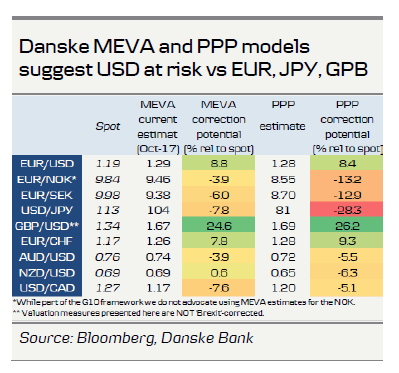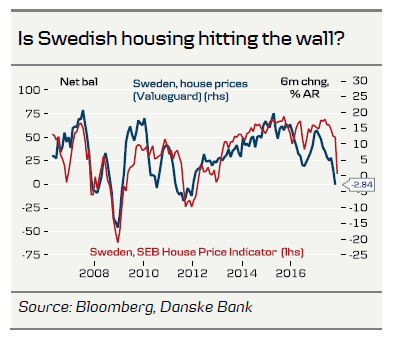Key points
- We expect the global expansion to continue lending support to profits and risk assets.
- We do not project a bond bear market, though. Rather we look for more US curve flattening.
- Credit spreads are set to narrow further on a search for yield and low default rates.
- In the FX space, we look for strengthening of USD, GBP and NOK in 2018.
As 2017 draws to a close, the question increasingly on investors’ minds is where they can make money in 2018. Below is a summary of our key macro and market views.
Strong global macro backdrop. Going into 2018, the global economy is in the best shape it has been in six to seven years. In The Big Picture: Global economy still on a roll, we argue that the global expansion is set to continue, albeit in a slightly lower gear than in 2017, as we expect a slowdown in China to weigh slightly on global activity. Still, the global economy is set to continue growing above the trend rate next year, driven increasingly by fixed investments, which have widely been the missing link in the global recovery until this year.
We look for core inflation in the US and euro area to increase only gradually. The main reason for this scenario is our expectation that wage demands will continue to be fairly moderate and that the Chinese slowdown will reduce the inflationary impact of commodity prices.
The benign inflation picture should allow the central bank exit to take place at a measured pace. Adding to the positive picture is the lack of big risk factors to growth at the current time. On our watch list, though, is the Italian election next year, North Korea and the tensions in the Middle East.
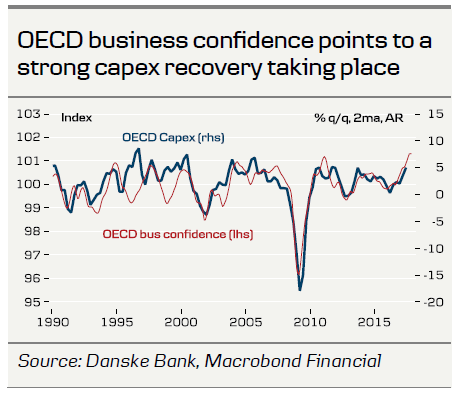
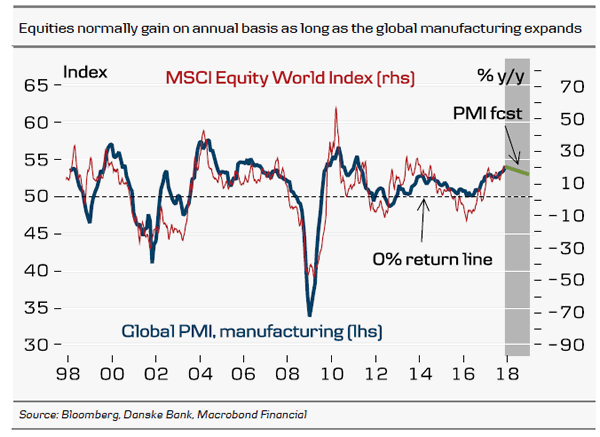
Equities – positive but lower returns and more volatility. The above macro environment is typically favourable for risk assets and, thus, also equities. As long as growth stays above trend and we do not see a big upward inflation surprise forcing central banks to step on the brakes, equities have outperformed bonds historically. Equities will be supported by robust profit growth even if it moderates a bit from this year. A very low level of yields on both corporate and sovereign bonds also continues to drive money into risk assets and push risk premiums even lower. In our view, the expected slowdown in the Chinese manufacturing and construction sector will cause some headwinds for emerging markets but developed markets should benefit from the capex recovery benefiting manufacturing in this area.
With some deceleration in the global cycle and risk premiums lower, we expect to see lower returns in 2018 than in 2017. In our view, volatility is also likely to pick up, as investors may feel they are skating on slightly thinner ice and, thus, are more prone to taking chips off the table if some risk factors flare up.
Euro credit – further tightening of spreads. While credit spreads are generally tight, we believe the macro backdrop points to a further search for yields and even further spread tightening in 2018. We expect defaults to be low in the expected macro environment and the ECB to continue being a buyer of corporate credit until Q4 when the QE programme ends. In our view, the risk-reward is not as good as in 2017 with the current level of spreads and hiccups are likely to happen during the year. However, we expect these to be temporary and recommend using them to buy credit.
Sovereign bonds – no big bear market. As expressed in Strategy – ‘Bond yield conundrum vol. 2’, 30 November, we do not expect a big bond bear market in 2018. While we look for yields in the short end to move higher as the Fed continues to hike rates and an ECB hike is gradually moving closer, the longer ends of the yield curves are set to be supported by a range of factors. These include: (1) inflation expectations being set to stay in check, with commodity prices cooling, (2) the central bank natural rate (the so-called r-star) having come down, (3) bond markets being very rare when the business cycle is cooling off – even when the central bank is tightening and (4) the very low yield level in Japan is the gravity of bond yields putting a cap on how high US and euro yields go as Japanese investors search for yield in global bond markets.
Consequently, we also expect the current flattening of the US yield curve to continue in 2018. It’s one of our fixed income top trades for 2018 (see Danske Bank 2018 Fixed Income Top Trades, 6 December).
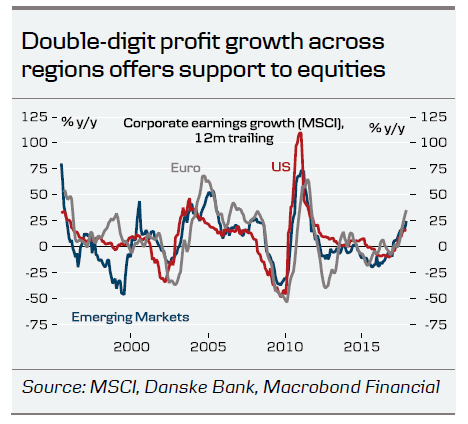
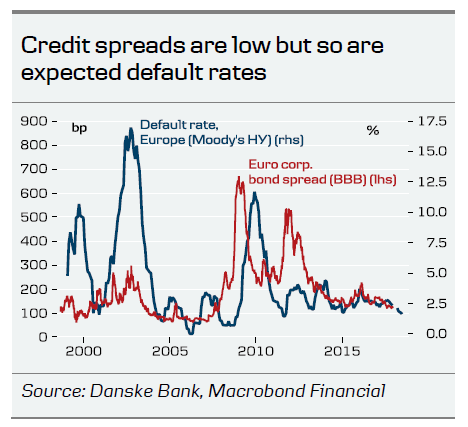
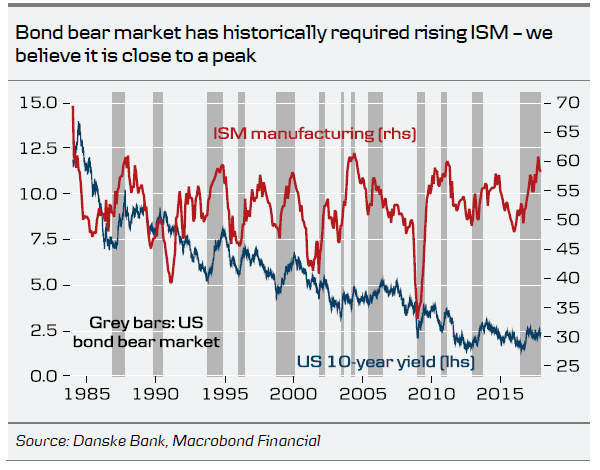
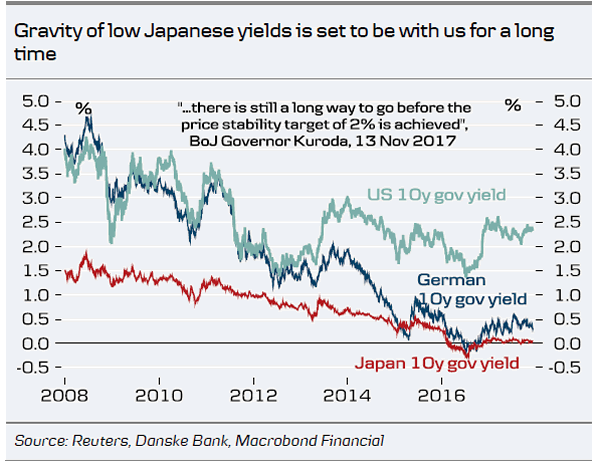
FX – higher EUR/USD, lower EUR/GBP, higher NOK/SEK. We keep our longstanding view that EUR/USD will resume the move higher in 2018, as the cross is still undervalued according to our valuation model (MEVA). The bond-related portfolio outflows of the euro area are also set to turn EUR positive, as the market eyes the ECB exit.
For 2018, we also look for EUR/GBP to move lower. In our view, Brexit clarification and valuation will be supportive for GBP relative to EUR.
In Scandinavia, the key theme to play is the weakening of housing markets. The housing market in Sweden is looking fragile and, although the SEK has been beaten up lately, we expect it to trade with a ‘housing risk premium’ for some time and expect growth deceleration and the repricing of the Riksbank to continue weighing on the currency in 2018. In contrast, we see a compelling case for NOK to strengthen versus both EUR and SEK. The macro picture looks solid, the higher oil price is not yet reflected in NOK strength and the NOK is undervalued, judging from both our MEVA model and PPP. Imported inflation is also set to pick up on the back of the recent NOK weakening.
Overall, we see a compelling case for EUR/NOK to move lower in 2018. With our more bearish view on SEK, we also look for upside in NOK/SEK. For more views on the FX market, see FX Top Trades 2018: How to position for the year ahead, 6 December. Overall, we believe the best performance is still to be found in risk markets (both equity and credit) relative to government bonds. We recommend hedging US assets due to our view of a further USD weakening in 2018. In FX markets, we see opportunities in NOK and GBP, while we recommend caution in SEK.
